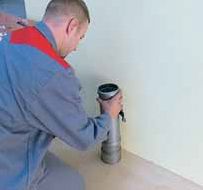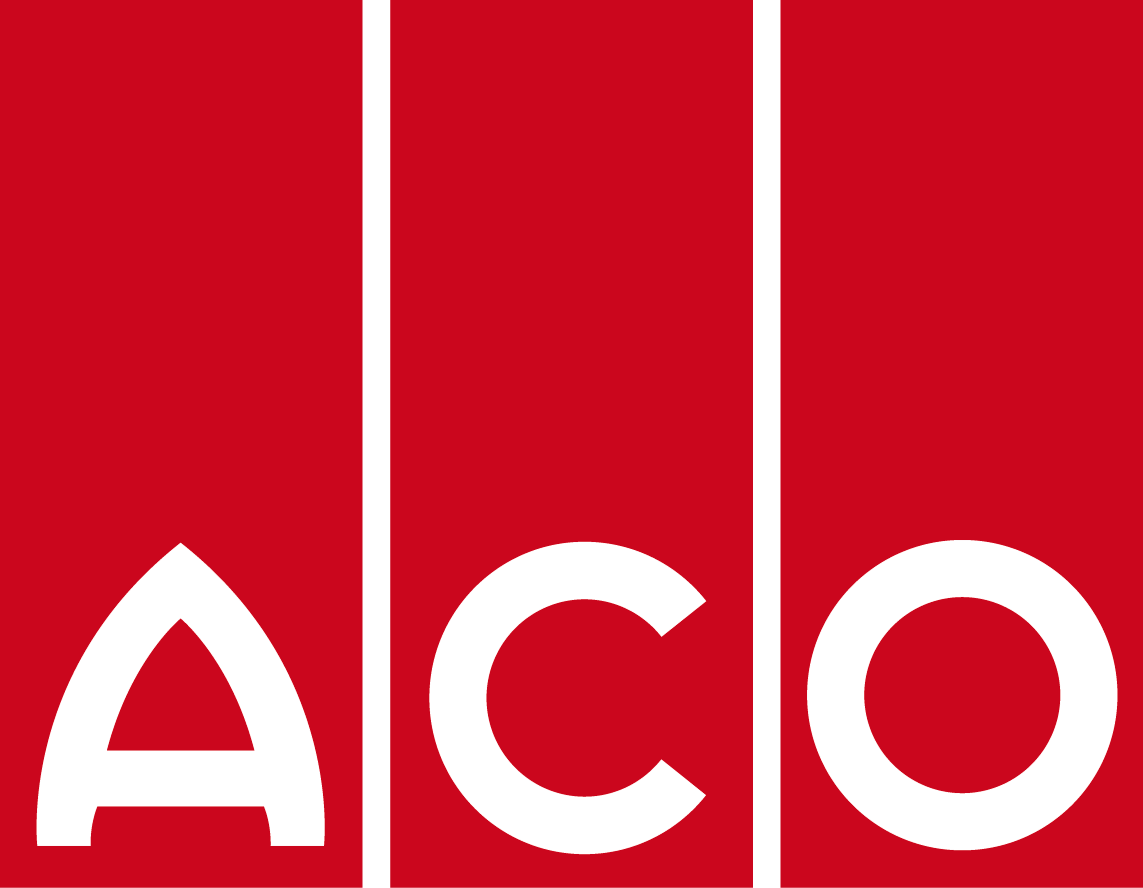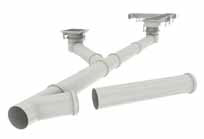If it is necessary to adapt or shorten pipe lengths, then the cut must be square,clean and ready chamfered. Cutters are available from ACO (click here for more information). These tools are designed to form the edge bevel on the male spigoted end of the pipe.
Carbon steel wheels are not permitted.
Pipe Protection
The installation of ACO Pipe should be in accordance with the recommendations below and with AS/NZ 3500.
Below Ground Installation
When pipework is to be installed in the ground, place the pipe in a sandy bed of 75mm (minimum thickness) free of small gravel, sticks, etc. The sand should be free of chlorides and salt.
During installation, take care to not scratch the surface of the stainless with carbon steel. Similarly, avoid subjecting the stainless steel pipes to welding and grinding airborne hot particles, metal shavings, and chemicals which may cause corrosion.
Soil cover
Where pipework is to be installed beneath a water table, apply the following soil depths:
| Pipe diameters 50, 75, 110 |
Low density soil 15kg/m³ 400mm
High density soil 23 kg/m³ 380mm |
| Pipe diameters 125, 160, 200, 250 |
Low soil density 15kg/m³ 580mm
High soil density 23kg/m³ 650mm |
Where the ground is permanently cold as experienced in some Alpine and southern extremities of Australia & New Zealand, then the drainage may need to be heated.
In general however, the minimum permissible depth to avoid winter freezing of water is 800mm. Note that this recommendation is applicable where the ground does thaw during spring and becomes quite warm during summer.
Backfilling around the pipe can only start when the position of the pipe has been checked and approved.
Socket Clamps
ACO Pipe, pipes and fittings comprise push-fit socket joints. These will not be able to resist internal pressure beyond design limits unless precautions are made to ensure that the joints do not slide apart.
In most cases, appropriate fixing to the building can overcome this. If it is difficult however, or impossible to fix the pipes to the building, socket clamps can prevent the push-fit sockets and spigot ends from sliding apart in the event of overload or the generation of excessive internal pressure.
ACO Pipe socketed joints with socket clamps can withstand the following pressures:
| Pipe Dimensions (mm) |
Maximum Pressure (bar) |
| 50mm |
+2 |
| 75mm |
+2 |
| 110mm |
+2 |
| 160mm |
+1 |
Horizontal Pipework
The discretion of the installer should be applied in each instance to ensure that the pipe is adequately supported. Generally, when the pipe is completely full of water, then the vertical deflection of the pipe between brackets should not exceed 1.5mm.
As a guide, use the table below for bracket spacing on horizontal pipes:
| Pipe Dimensions (mm) |
Bracket Spacing (metres) |
| 50mm |
2.0 |
| 75mm |
2.3 |
| 110mm |
2.5 |
| 125mm |
3.0 |
| 200mm |
3.0 |
Vertical Pipework
The load applied with a fluid in the pipe is vertically down. Position the highest bracket adjacent to the top inlet of the pipe, then mount brackets at 3 metre spacings. At the bottom of the vertical pipe, use a bracket within 200mm of the bottom. Fit brackets at each change of pipework direction or junction points.
The venting of vertical stacks shall be in compliance with AS/NZ 3500.
Pipework should be at least 35mm from the wall to facilitate maintenance and painting.
Minimum and Maximum Pipe Weights
To assist designers and installers with the selection of appropriate pipe supports, the table below sets out the weights for all pipe sizes.
| Pipe Diameter (mm) |
Pipe Weight Empty (kg/m) |
Pipe Weight Full (kg/m) |
| 50mm |
1.2 |
3.0 |
| 75mm |
1.8 |
6.9 |
| 110mm |
2.7 |
11.9 |
| 125mm |
3.3 |
15.8 |
| 160mm |
5.0 |
24.6 |
| 200mm |
7.5 |
38.0 |
| 250mm |
10.6 |
59.7 |
 The installation of ACO Pipe® should be in accordance with the recommendations below and with AS/NZ3500.
The installation of ACO Pipe® should be in accordance with the recommendations below and with AS/NZ3500.

 Make sure both ends are clean and free of dirt.
Make sure both ends are clean and free of dirt.




